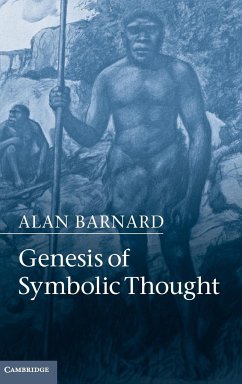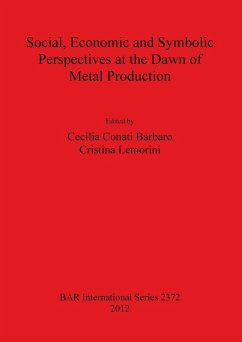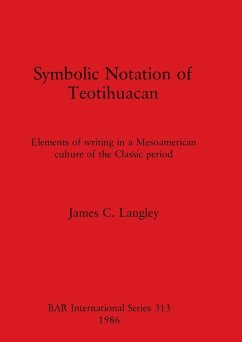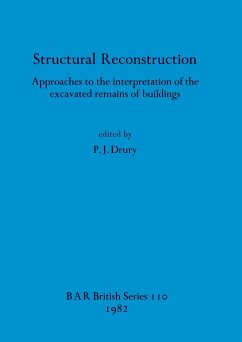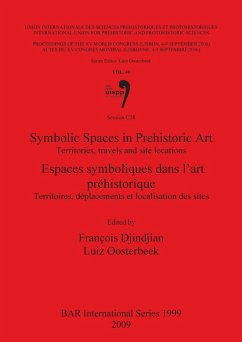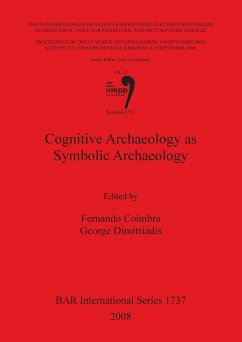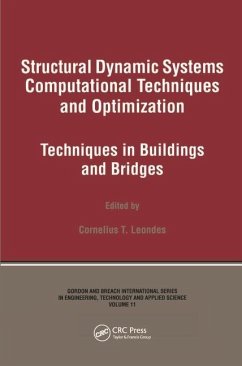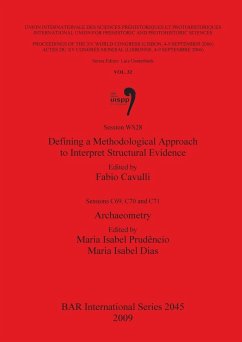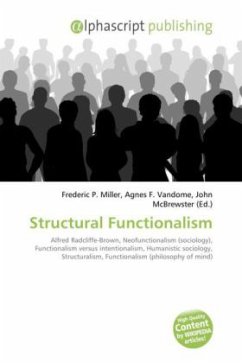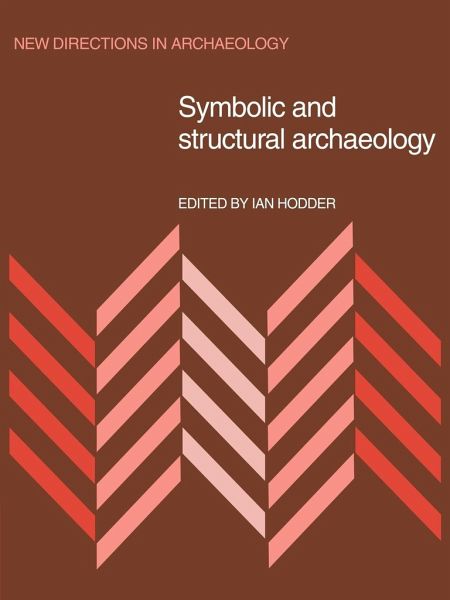
Symbolic and Structural Archaeology
Versandkostenfrei!
Versandfertig in 1-2 Wochen
57,99 €
inkl. MwSt.

PAYBACK Punkte
29 °P sammeln!
This volume presents a searching critique of the more traditional archaeological methodologies and interpretation strategies.This volume presents a searching critique of the more traditional archaeological methodologies and interpretation strategies and lays down a firm philosophical and theoretical basis for symbolist and structuralist studies in archaeology. A variety of procedures, ranging from ethnoarchaeological studies and computing techniques to formal studies of artefact design variability, are utilized to provide models for archaeologists within the proposed framework and the theory a...
This volume presents a searching critique of the more traditional archaeological methodologies and interpretation strategies.
This volume presents a searching critique of the more traditional archaeological methodologies and interpretation strategies and lays down a firm philosophical and theoretical basis for symbolist and structuralist studies in archaeology. A variety of procedures, ranging from ethnoarchaeological studies and computing techniques to formal studies of artefact design variability, are utilized to provide models for archaeologists within the proposed framework and the theory and models are then applied to a range of archaeological analyses. This particular approach sees all human actions as being meaningfully constituted within a social and cultural framework. Material culture is not simply an adaptive tool, but is structured according to sets of underlying principles which give meaning to, and derive meanings from, the social world. Thus structural regularities are shown to link seemingly disparate aspects of material culture, from funerary monuments to artefact design, from the use of space in settlements, to the form of economic practices.
Table of contents:
List of contributors; Preface; Part I. The Development of Theory: 1. Theoretical archaeology: a reactionary view Ian Hodder; 2. Artefacts as products of human categorisation processes D. Miller; 3. Social formation, social structures and social change Christopher Tilley; 4. Epistemological issues raised by a structuralist archaeology M. Alison Wylie; Part II. The Search for Models: 5. Matters material and ideal Susan Kus; 6. House power: Swahili space and symbolic markers Linda Wiley Donley; 7. The interpretation of spatial patterning in settlement residues H. L. Moore; 8. Decoration as ritual symbol: a theoretical proposal and an ethnographic study in southern Sudan Mary Braithwaite; 9. Structures and strategies: an aspect of the relationship between social hierarchy and cultural change D. Miller; 10. Mortuary practices, society and ideology: an ethnoarchaeological study Michael Parker Pearson; Part III. Application: The Analysis of Archaeological Materials: 11. Boundedness in art and society Margaret W. Conkey; 12. Ideology, symbolic power and ritual communication: a reinterpretation of Neolithic mortuary practices Michael Shanks and Christopher Tilley; 13. Ideology, change and the European Early Bronze Age Stephen Shennan; 14. Sequences of structural change in the Dutch Neolithic Ian Hodder; Part IV. Commentary: Childe's offspring Mark Leone; Index.
This volume presents a searching critique of the more traditional archaeological methodologies and interpretation strategies and lays down a firm philosophical and theoretical basis for symbolist and structuralist studies in archaeology. A variety of procedures, ranging from ethnoarchaeological studies and computing techniques to formal studies of artefact design variability, are utilized to provide models for archaeologists within the proposed framework and the theory and models are then applied to a range of archaeological analyses. This particular approach sees all human actions as being meaningfully constituted within a social and cultural framework. Material culture is not simply an adaptive tool, but is structured according to sets of underlying principles which give meaning to, and derive meanings from, the social world. Thus structural regularities are shown to link seemingly disparate aspects of material culture, from funerary monuments to artefact design, from the use of space in settlements, to the form of economic practices.
Table of contents:
List of contributors; Preface; Part I. The Development of Theory: 1. Theoretical archaeology: a reactionary view Ian Hodder; 2. Artefacts as products of human categorisation processes D. Miller; 3. Social formation, social structures and social change Christopher Tilley; 4. Epistemological issues raised by a structuralist archaeology M. Alison Wylie; Part II. The Search for Models: 5. Matters material and ideal Susan Kus; 6. House power: Swahili space and symbolic markers Linda Wiley Donley; 7. The interpretation of spatial patterning in settlement residues H. L. Moore; 8. Decoration as ritual symbol: a theoretical proposal and an ethnographic study in southern Sudan Mary Braithwaite; 9. Structures and strategies: an aspect of the relationship between social hierarchy and cultural change D. Miller; 10. Mortuary practices, society and ideology: an ethnoarchaeological study Michael Parker Pearson; Part III. Application: The Analysis of Archaeological Materials: 11. Boundedness in art and society Margaret W. Conkey; 12. Ideology, symbolic power and ritual communication: a reinterpretation of Neolithic mortuary practices Michael Shanks and Christopher Tilley; 13. Ideology, change and the European Early Bronze Age Stephen Shennan; 14. Sequences of structural change in the Dutch Neolithic Ian Hodder; Part IV. Commentary: Childe's offspring Mark Leone; Index.





